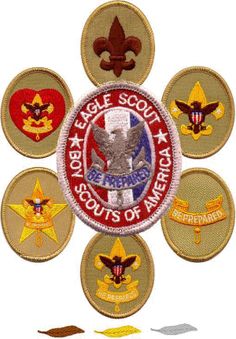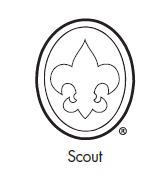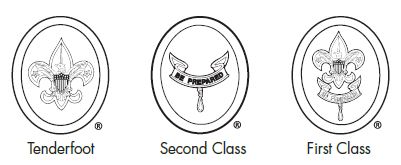Scouts BSA


Advancement at this level presents a Scout with a series of challenges in a fun and educational manner. As the youth completes the requirements, the aims of Scouting are being achieved: to develop character, to train in the responsibilities of participating citizenship, to develop leadership skills, and to develop physical and mental fitness. It is important to remember that in the end, badges recognize that Scouts have gone through experiences of learning things they did not previously know. Through increased confidence, Scouts discover or realize they are able to learn a variety of skills and disciplines. Advancement is thus about what Scouts are now able to learn and to do, and how they have grown. Retention of skills and knowledge is then developed later by using what has been learned through the natural course of unit programming; for example, instructing others and using skills in games and on outings.
Advancement, thus, is not so much a reward for what has been done. It is, instead, more about the journey: As a Scout advances, the Scout is measured, grows in confidence and self-reliance, and builds upon skills and abilities learned.
The badge signifies that a young person—through participation in a series of educational activities—has provided service to others, practiced personal responsibility, and set the examples critical to the development of leadership; all the while working to live by the Scout Oath and Scout Law.
The badge signifies a young person has provided service to others, practiced personal responsibility, and set the examples critical to the development of leadership.
The Advancement Process

The Scout rank is oriented toward learning the basic information every youth needs to know to be a good Scout. It starts with the Scout demonstrating knowledge and understanding of the Scout Oath, Scout Law, Scout motto, and Scout slogan and then introduces the Scout to basic troop operations and safety concerns.

Tenderfoot, Second Class, and First Class ranks are oriented toward learning and practicing skills that will help Scouts develop confidence and fitness, challenge their thought processes, introduce them to their responsibilities as citizens, and prepare them for exciting and successful Scouting experiences. Requirements for the Scout, Tenderfoot, Second Class, and First Class ranks may be worked on simultaneously; however, these ranks must be earned in sequence. For information on boards of review for these ranks, see “Particulars for Tenderfoot Through Life Ranks” 8.0.2.0, especially point No. 7

All requirements for Star, Life, and Eagle, except for those related to merit badges, must be fulfilled after the successful completion of a board of review for the previous rank. In Scouts BSA, advancement requirements must be passed as written. If, for example, a requirement uses words like “show,” “demonstrate,” or “discuss,” then that is what Scouts must do. Filling out a worksheet, for example, would not suffice.